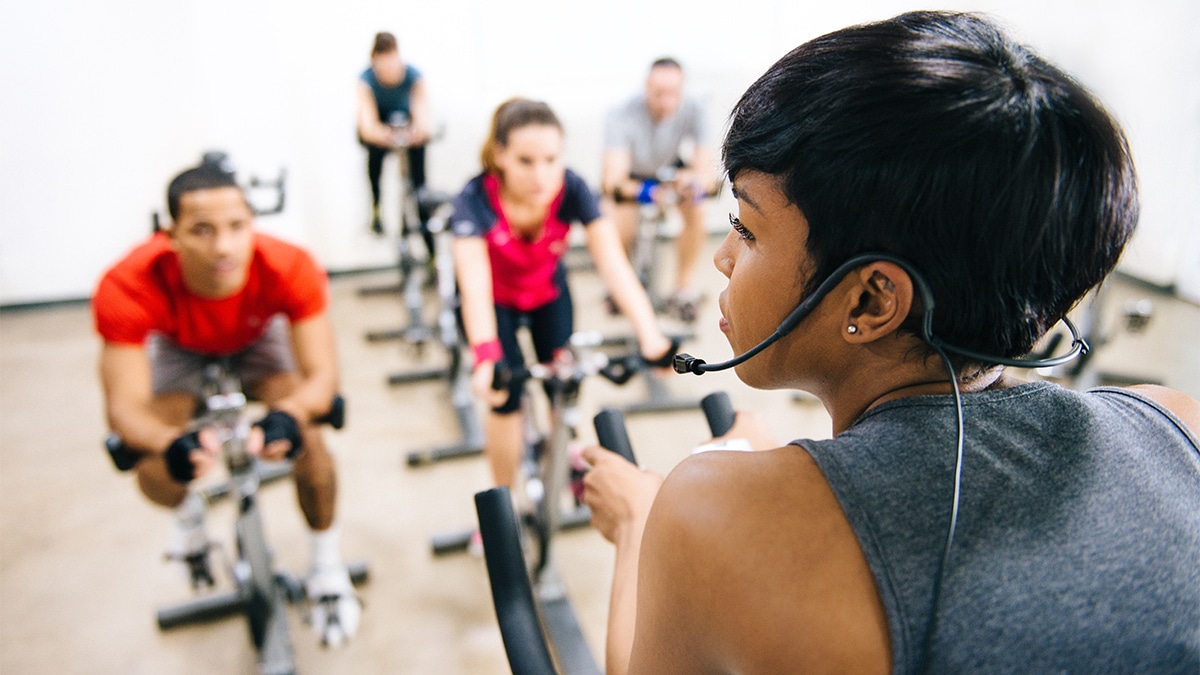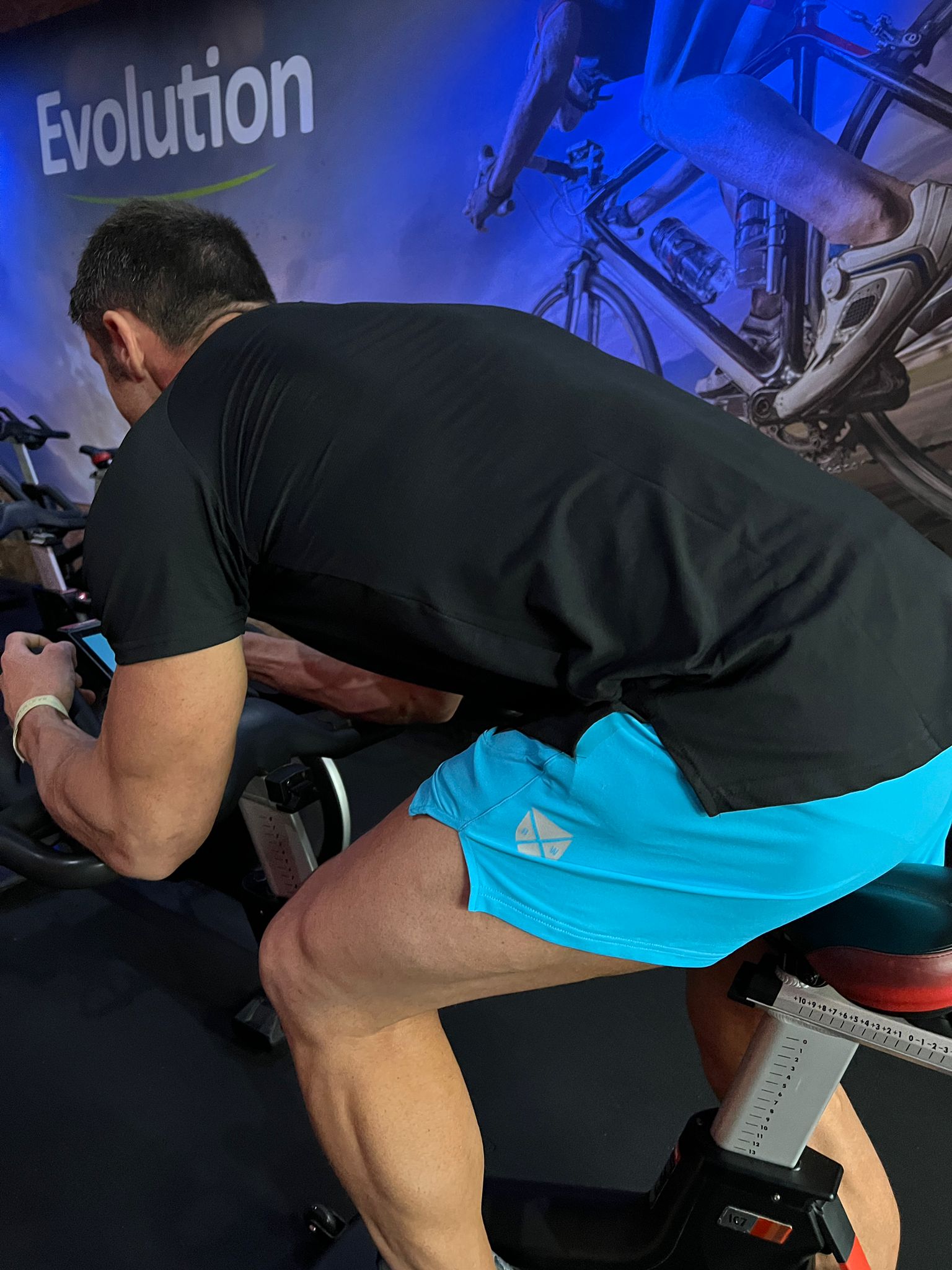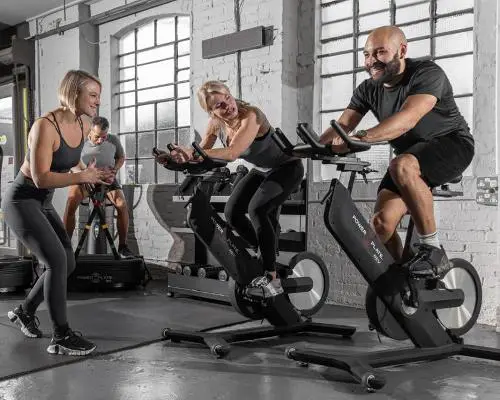Cycling primarily works the quadriceps, hamstrings, glutes, and calves. It also engages the core muscles for stability during the ride.
Cycling is a dynamic exercise that offers both cardiovascular and muscle-strengthening benefits. As a low-impact activity, it is gentle on the joints yet effective in toning lower body muscles. Regular cycling can lead to improved leg strength and endurance, making it an excellent choice for fitness enthusiasts.
The activity’s rhythmic nature not only boosts leg muscle definition but also enhances overall stamina and balance. Whether you’re taking on steep hills or cruising on flat roads, cycling provides a versatile workout that appeals to beginners and seasoned athletes alike.
Its adaptability and varying intensity levels make it suitable for a range of fitness goals, from weight loss to muscle building, ensuring a full lower-body workout with every pedal stroke.

Credit: www.ideafit.com
Pedal Power: Muscles At Work
Cycling is a powerhouse activity for your body. It works a surprising number of muscles. From core stability to leg power, cycling is an all-rounder. Below, learn about the muscles that cycling engages.
Core Stability Providers
While pedaling, your core keeps you balanced. The abdominals and back are the main muscles involved. They ensure you stay upright on the bike. Stronger core muscles make for a smoother ride.
- Rectus Abdominis – This is your ‘six-pack’ area. It helps with breathing and maintains posture.
- Obliques – They are on the sides of your abdomen. These help you twist and turn while riding.
- Erector Spinae – They run along your spine. They keep you from slouching.
Leg Muscles In Motion
The legs do most of the work when cycling. Each phase of the pedal stroke works different muscles. Here’s what happens in a full cycle:
| Phase | Muscle Groups |
|---|---|
| Downstroke | Quadriceps and Calves |
| Upstroke | Hamstrings and Glutes |
Quadriceps push down the pedals. Hamstrings and glutes kick in to pull up. Calves give the push extra power and stability.
Leg Muscles: The Driving Force
Imagine your legs as the engine of a bike. They power each pedal stroke,
propelling you forward. Each section of your leg plays a special role in
cycling, working together to create a smooth, strong ride. Let’s deep dive
into these mighty muscles.
Quadriceps: The Power Pushers
Quadriceps, or ‘quads’, are the stars when you push
down on the pedals. They’re located at the front of your thigh. These
four muscles work hard to straighten the knee with every rotation. It’s
like they’re saying, “Go, go, go!” as you cycle.
Hamstrings: The Pulling Power
Opposite the quads, the hamstrings are crucial for pulling
up on the pedals. Located at the back of your thigh, they bend your knee
and help in hip extension. Strong hamstrings give your pedaling a
powerful upward kick.
Calf Muscle Dynamics
Meet your calf muscles: the gastrocnemius and soleus. They
join the show by pointing the toes down with each stroke. Think of them
as the polish on your pedaling, the fine-tuning for a fluid cycle.
Glute Muscles For Uphill Thrust
Your glutes are the big bosses for uphill challenges. They comprise three
muscles that shape your buttocks. These muscles push you up those tough
climbs and add extra power to your pedal. Without strong glutes,
conquering hills would be much tougher.
Core Muscles: The Silent Heroes
Core muscles play a vital role in cycling. They keep riders stable and efficient. Most people think legs do all the work. That is not entirely true. Your core muscles, including your abs and back, work quietly but powerfully.
Abdominal Muscles For Balance
While pedaling, your abdominal muscles provide balance. They keep you upright on the bike. Even on uneven terrain, they work to maintain your position. A strong core means better control. Here’s how cycling engages your abs:
- Maintains your body straight while you pedal.
- Helps resist the force when you climb hills or sprint.
- Supports your body during long rides, preventing fatigue.
Lower Back And Posture Support
Your lower back muscles are just as important. They support your posture on the bike. Good posture leads to more efficient riding. Here’s what your lower back does during cycling:
- Stabilizes your pelvis, linking leg action to torso movement.
- Prevents back pain by absorbing shocks from the road.
- Reduces the strain on your legs, sharing the workload.
| Muscle Group | Function While Cycling |
|---|---|
| Abdominals | Balance and Stability |
| Lower Back | Posture Support and Shock Absorption |
This section of the blog introduces the core muscles as essential and often overlooked contributors to cycling performance, highlighting the roles of the abdominal and lower back muscles in maintaining balance, posture, and overall efficiency during a ride.

Credit: rugbywarfare.com
Upper Body Contribution
When talking about cycling, it’s easy to focus on legs. But cyclists also know that their arms and shoulders get a solid workout. During this part of the journey, we’ll discover how the upper body muscles chip in.
Arm And Shoulder Engagement
Arms and shoulders play a vital role in cycling. They provide balance, control, and power during a ride. The two major muscle groups in action are:
- Biceps – bending your elbows as you grip the handlebars.
- Triceps – stabilizing your arms for better bike handling.
Shoulders work hard too. They include:
- Deltoids – keeping your arms lifted and handling the handlebars.
- Rotator Cuffs – stabilizing your shoulders throughout your ride.
The Role Of Pectorals And Lats
Your chest and back muscles get in on the cycling action as well.
| Muscle Group | Function |
|---|---|
| Pectoral Muscles | Assist in steering and maintaining posture. |
| Latissimus Dorsi (Lats) | Engage when you pull on the handlebars for power. |
Together, they ensure a stable upper body as you pedal, especially during vigorous rides.
Secondary Muscles Benefiting From Cycling
Cycling doesn’t just build your legs. It’s a full body workout.
Beyond the prime movers, your body engages a surprising network of secondary muscles as well.
Let’s explore the supporting cast that keeps your ride smooth and powerful.
Hip Flexors for Smooth Pedaling
Hip Flexors For Smooth Pedaling
Your hip flexors play a crucial role in cycling.
They help you pull up during pedaling.
This movement is key for a fluid pedal stroke.
- Iliopsoas: Critical for hip bending.
- Rectus Femoris: Assists in thigh lifting.
Tibialis Anterior: The Unsung Supporter
Tibialis Anterior: The Unsung Supporter
The tibialis anterior may not get much attention, but it’s vital.
It helps stabilize your ankle and foot each time you pedal.
| Function | Benefit |
|---|---|
| Ankle Stability | Smooths out pedal strokes |
| Foot Positioning | Optimizes power transfer |
Cycling As A Full-body Workout
At first glance, cycling might seem like a leg-only activity. But a closer look reveals it’s truly a full-body workout. Think of your body as the engine driving the bike. While the legs pump away, the rest of your body is hard at work supporting this dynamic movement. Let’s explore the muscle groups that synchronize and adapt to amplify your cycling power.
Synergy Between Muscle Groups
When cycling, your muscles don’t work in isolation. They form a powerful team.
- Legs: Undoubtedly the stars of the show, with quadriceps, hamstrings, and calves pushing the pedals.
- Core: Your abdominal and lower back muscles engage to maintain balance and posture.
- Arms and Shoulders: Grip the handlebars, support upper body weight, and help navigate the bike.
- Glutes: Play a significant role during the downstroke phase, providing powerful thrusts.
Each revolution of the pedals demands a ballet of muscle cooperation.
Enhancing Muscle Endurance And Strength
Cycling isn’t just about spinning your legs. It’s a remarkable way to build endurance and strength across several muscle groups.
- Resistance: Tackling different terrains and grades adds resistance, challenging your muscles.
- Pace: Alternating between sprints and steady rides works different energy systems.
- Duration: Longer rides demand sustained muscle performance, boosting endurance.
This constant engagement not only sculpts your muscles but also enhances your overall physical prowess.
Frequently Asked Questions On What Muscle Groups Does Cycling Work
What Muscles Are Toned By Cycling?
Cycling tones the quadriceps, hamstrings, glutes, and calves. It also engages core muscles for balance and stabilization.
Can You Lose Belly Fat By Cycling?
Yes, cycling can help you lose belly fat as it burns calories and builds muscle, aiding in overall fat reduction.
Can You Build Muscle From Cycling?
Yes, cycling can build muscle, particularly in the lower body. Regular pedaling strengthens the glutes, quads, hamstrings, and calves.
Does Cycling Make You Lean Or Bulky?
Cycling typically leads to a lean physique due to its high-calorie burn and low resistance nature. It’s less likely to add bulk compared to weightlifting.
Which Muscles Are Targeted By Cycling?
Cycling primarily works the lower body muscles, specifically the quadriceps, hamstrings, glutes, and calves. It also engages the core for stability.
Does Cycling Improve Muscle Strength?
Yes, cycling can improve muscular strength, especially in the lower body. Consistent cycling increases muscle endurance and tone.
Can Cycling Help With Weight Loss?
Regular cycling can contribute to weight loss by burning calories and increasing metabolic rate, combined with a balanced diet.
Conclusion
Cycling is a dynamic exercise, targeting key muscles for a full-body workout. Your legs, core, and back all benefit, enhancing strength and endurance.
Embrace this eco-friendly activity to boost fitness and improve muscle tone. Pedal your way to a healthier lifestyle, strengthening body and mind with each ride.

Steven is a professional cyclist and his passion is cycling. He has been cycling for the last 6 years and he loves using bikes while outing as well. Based on his experiences with the different types of bikes; he is sharing his opinions about various bikes so that a beginner can start right away. Find him on Twitter @thecyclistguy Happy Biking.


Leave a Reply